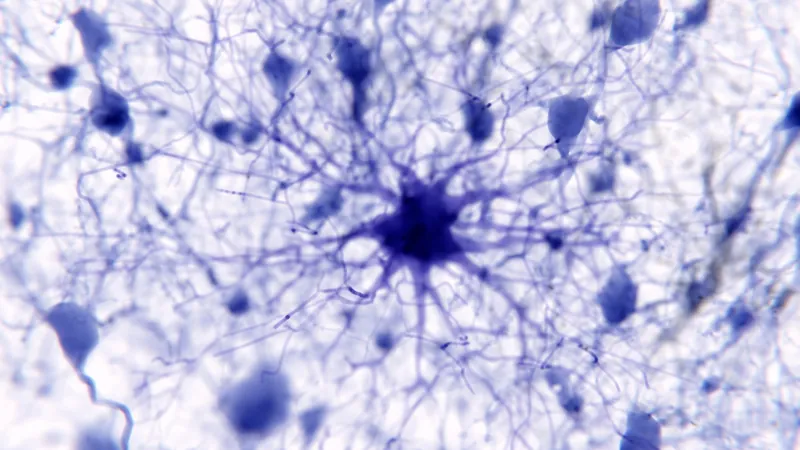
Unlocking Memory: How Star-Shaped Brain Cells Could Revolutionize Our Understanding of Storage
2025-06-09
Author: Yu
A New Frontier in Neuroscience
For years, scientists believed neurons were the brain's primary players in memory and thought. But groundbreaking new research suggests that astrocytes, star-shaped cells previously thought to play only supportive roles, may actually be crucial for memory storage.
Astrocytes: The Brain's Unsung Heroes
A study published in May in the journal PNAS reveals a fascinating new architectural network involving astrocytes. These cells perform essential housekeeping tasks in the brain like clearing debris, nourishing neurons, and regulating blood flow. Their delicate, branching structures, or processes, wrap around synapses, forming what researchers term a 'tripartite synapse'—a whimsical three-way handshake between neurons and astrocytes.
"Imagine an astrocyte as an octopus with millions of tentacles," explained Leo Kozachkov, the study's lead author and a postdoctoral fellow at IBM Research. "The head is the cell body, while the tentacles wrap around synapses, engaging in this complex communication dance.”
A Unique Communication Method
Unlike neurons, which send electrical impulses, astrocytes use calcium signaling to communicate. They respond to synaptic activity by adjusting their internal calcium levels and can release chemical messengers at synapses based on those changes.
A New Model for Memory Storage
Kozachkov and his team harnessed machine learning to better understand how astrocytes might process this information. Existing models that link only pairs of neurons fail to capture the complexity of brain communication—a single astrocyte connects with thousands of synapses, creating a web of interactions.
Their revolutionary model proposes that astrocytes could serve as efficient "computers" for memory, suggesting that these star-shaped cells play a pivotal role in how the brain achieves its incredible storage capacity.
Memory Transformation Through Calcium Patterns
The researchers theorized that astrocytes retain memories through gradual shifts in their internal calcium patterns, converting these into signals sent back to neurons. Instead of the entire astrocyte acting as a computational unit, individual processes might operate independently, offering an energy-efficient way to harbor vast amounts of memories.
Implications for Neurodegenerative Diseases
This innovative model could have profound implications not only for our understanding of memory but also for therapeutic strategies surrounding neurodegenerative diseases like Alzheimer's. Kozachkov indicated that by modulating the connectivity of astrocyte processes, it might be possible to reinstate lost memory functions.
The Road Ahead
While the research offers a promising glimpse into astrocyte function, experts caution that we need more comprehensive studies to validate these hypotheses. As we delve deeper into the brain's intricate workings, this exploration of astrocytes may just unlock the door to new treatments and a better understanding of memory itself.





 Brasil (PT)
Brasil (PT)
 Canada (EN)
Canada (EN)
 Chile (ES)
Chile (ES)
 Česko (CS)
Česko (CS)
 대한민국 (KO)
대한민국 (KO)
 España (ES)
España (ES)
 France (FR)
France (FR)
 Hong Kong (EN)
Hong Kong (EN)
 Italia (IT)
Italia (IT)
 日本 (JA)
日本 (JA)
 Magyarország (HU)
Magyarország (HU)
 Norge (NO)
Norge (NO)
 Polska (PL)
Polska (PL)
 Schweiz (DE)
Schweiz (DE)
 Singapore (EN)
Singapore (EN)
 Sverige (SV)
Sverige (SV)
 Suomi (FI)
Suomi (FI)
 Türkiye (TR)
Türkiye (TR)
 الإمارات العربية المتحدة (AR)
الإمارات العربية المتحدة (AR)